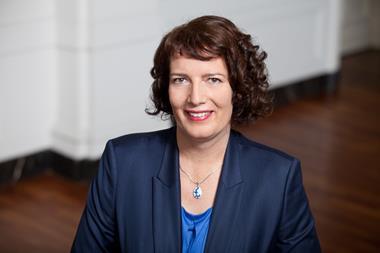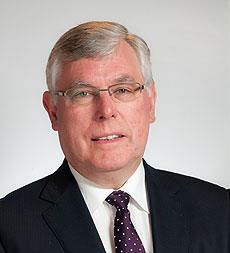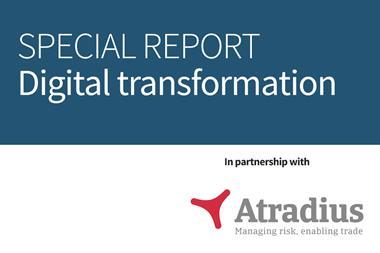Ferrovial’s head of risk believes awareness of both dangers and opportunities should involve everyone in a business
Every risk manager knows that for every risk there are also opportunities. But Daniel San Millán (pictured), risk manager at the Spanish infrastructure-management giant Ferrovial, argues that the challenges that have battered Europe since 2008 have done more than just offer the profession opportunities – they have propelled it from the backroom of many firms to the centre of operations.
“The crisis has pushed risk management and risk managers high up in our multinationals,” he says. “Suddenly everybody has realised that risks are out there. Before this, in the good times, people forgot about risks, everything was going well. But now they remember. Now they know. The challenge we now face as risk managers over the next few years as things improve in the economy, what we have to work for, is to maintain our position where it is.
Put down the phone
“We have to educate and teach our colleagues; show them what risk management has to offer. We have to tell our colleagues: let us not forget what we have learned. We must make sure we all remember the lessons of the last five years. This might sound very abstract. But it is essential for the sustainability of our biggest companies and we can do it through our enterprise risk management (ERM) systems – by making them the best they can be and demonstrating their value to everyone in the company.”
For San Millán, the key to achieving this goal – and managing a top-flight ERM – is putting down the phone and the mouse, getting out of your chair and talking to your colleagues: the human touch is an essential part of his communication strategy. “We need to show them what is the purpose of the ERM, and we need to do it face-to-face,” says San Millán. “Not by phone or email. You have to get there in front of the guy whom you are trying to communicate with.”
This is especially true as, for the modern risk manager, knowledge is power. Without accurate, up-to-date data, it is impossible to do your job properly – and for that you need the belief of your colleagues.
Everyone to be involved
“We need to be close to the management team when they are making decisions, but we must also be close to the business line as well. We need the complete view.” Learning how to occupy this niche in the company structure can be tricky. “In these big multinationals that we work in, there can be too much distance between the managers and the business line,” says San Millán. “We should be one of those departments that connect both sides of the company. This is quite difficult, but it is not impossible. It is essential that we convince everyone in the company that the ERM is a management tool, because this doesn’t happen naturally. There is often suspicion. Sometimes the business line will see the ERM as interference – as a control tool. Their first reaction is often to see it as more complexity, more unwanted questions from ‘Daddy’. Something to make their lives harder.
“They need to see that an ERM system is something natural. Something that joins downstairs and upstairs. It’s not always easy to project this message, but it is the right way.”
This is particularly true in firms where risk management is still a relatively ‘new’ – and poorly understood – function, or where the discipline is still seen as a back-office department that buys insurance, and nothing else. In these circumstances the major challenge facing a risk manager is demonstrating that the profession has much more to offer – particularly when beginning a new ERM.
“The ERM is the perfect way to demonstrate the value you bring and to do this you have to do it right from the start,” says San Millán. “You cannot start an ERM in your company by emailing your colleagues; that approach is doomed to failure. You have to very methodically explain to everybody what it is about. You have to convince the board first, of course. If you go down without enough support from the board, you are dead. Have in mind that ERM is not a compliance tool, not a control tool – it is a management tool. Sometimes I hear people say: ‘What is our risk management system? We should write something about this.’ But it is not something that you just write down. It is more than that, it has to be something that your colleagues live and feel. Something that they can use.”
ERM a decision-making tool
San Millán says: “Senior managers need to know that the ERM is a tool that will put a huge amount of information at their fingertips, on their iPad, wherever they are – in a plane, in Africa, in Asia. This is the tool that will enable them to make the right decision.
“You have to explain what you are going to do. Everybody has to understand that this is not just another process – we have enough of those – it is a special project.”
But the ERM is not the only special project that risk managers should be involved with, and San Millán firmly believes successful professionals should be open minded about all aspects of their practice as a means to impress their value on colleagues – and this includes buying insurance. A business like Ferrovial deals in vast sums of money and operates incredibly complex projects across airport infrastructure, construction, toll roads, water treatment and more. “In our business the main issue that we face is how to solve the equation between huge capital repayments and the need to be efficient,” says San Millán.
Prove you are there to help
But, according to San Millán, the secret formula is not accepting the status quo, and changing it where you can.
“To get cover at the right price risk managers should be open minded to innovation and think like an insurer. For example, say we are trying to insure 20 or 25 toll roads across the world, we are looking for nat cat cover and going to insurers and brokers and saying: ‘This is my portfolio, this is my loss report; I want to deal with you.’
“In my experience insurers are unable to move from their own nat cat model. They just can’t do it. Even if you can demonstrate a good loss report, the insurer will not budge. The answer is to develop your own nat cat models. Show them your data and persuade them to work with you on an individual basis.
“This is what risk managers should be doing: they should be proactive in giving specific asset data to their insurers to help them lower their premiums. Spend some money on this – be sophisticated and technical – because it will be a very good investment and give you very good return on your premiums.”
This spirited approach is typical of San Millán’s view of the profession. Ask him what his hopes are for the future, and his answer is simple: “It depends on us. We should work every day to be relevant and useful,” he says. “Once you have convinced people that you are here to help, this will push risk management to a good place in your firm.”
The bottom line is that risk management is very important. “It can provide sustainability in a rapidly changing world,” says San Millán. “We need to understand this ourselves and project it outwards. In the good times it is easy to forget about risk management; when everybody is happy and the business is growing double-digit figures. But the risk is still there and we need to be there to remind everyone.”
Show value in your ERM
The key issue is to know how to talk to every department of your company, from the factory floor to the boardroom.
“You have to fight hard to change the perceptions of the people around you,” says San Millán. “When you are talking to the business line, you have to say: ‘Listen, I am not here to tell you what to do. This is your chance to share what your worries are – and this is your best way to ask for resources to cover that worry. This report will go up; it will be seen by
the board. Co-operate with the ERM and you will be in a better position.’ This will change their mind.”
When you talk to the board, explain to them how a great ERM will make their lives easier and their decisions better, he says. “The key issue is to convince the board that this tool is going to provide them with the information to make the proper decision on time.
“If you have a business with 100,000 employees operating in 40 or 50 countries, it’s not easy to always know what is going on with the business line, and the board know this. But with an ERM that’s properly integrated they can have all the worries and concerns of their people in their hand.
“They can make quick decisions before a risk becomes a loss.”
Innovate with insurance
Giving insurers relevant data about your firm that they can use to lower premiums can be a powerful tool in creating efficiencies, but you can’t do it alone. “This kind of innovation will require a lot of information from your colleagues,” says San Millán. “Sometimes this can be an issue, because at the end of the day, they know that everything they give you will go in front of the board. But you have to explain your reasons: you have to explain why it is essential to use the same weapons as the insurers, and what can be gained by doing so. In the end the market is so. When you see the market statistics, you can see there is a lot of capacity. This is not the problem. The challenge is how to manage the deal – and to do this you need information.”




















No comments yet